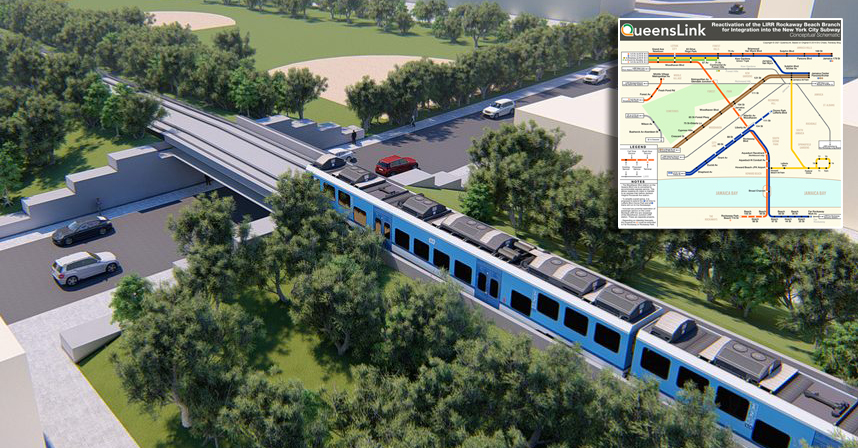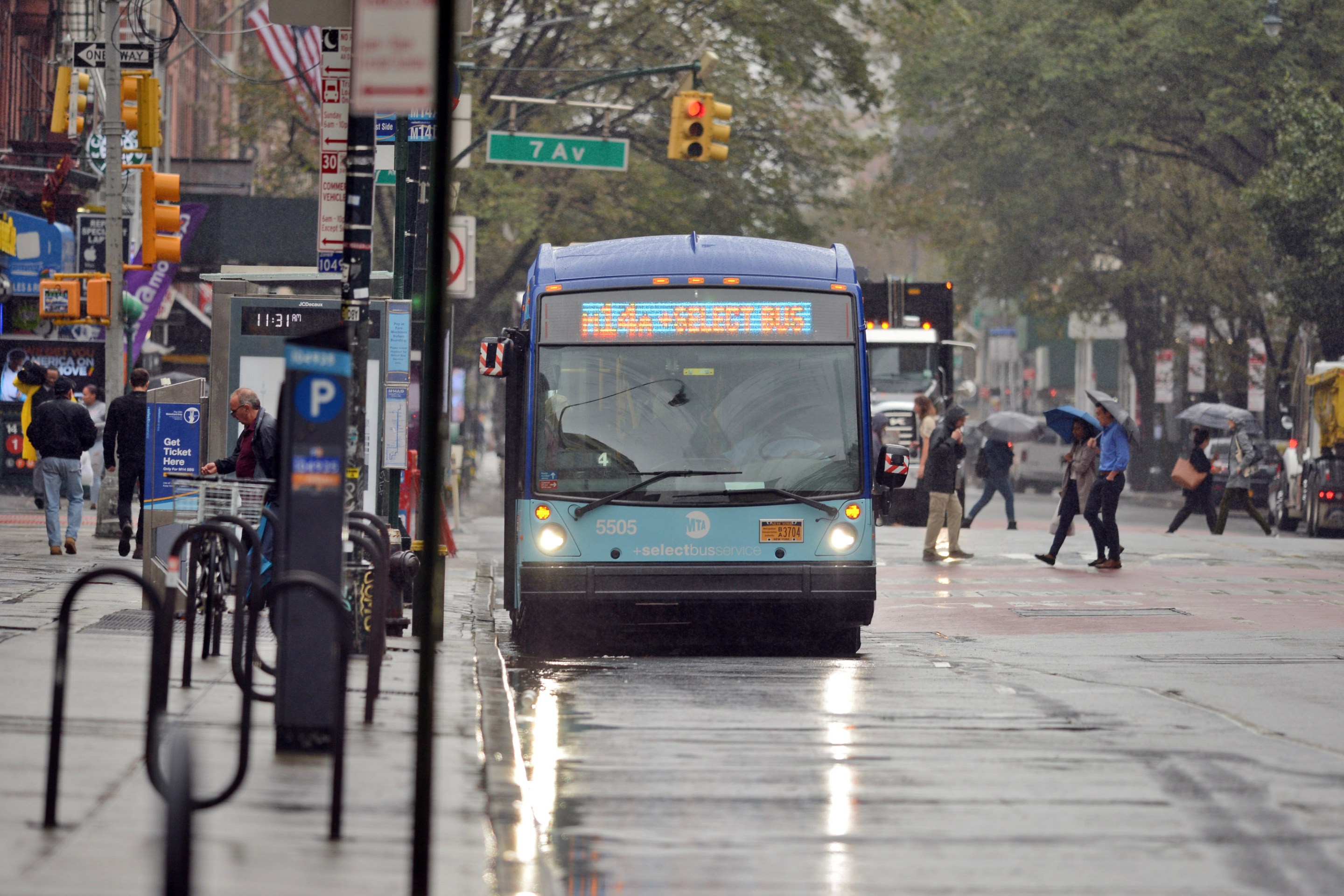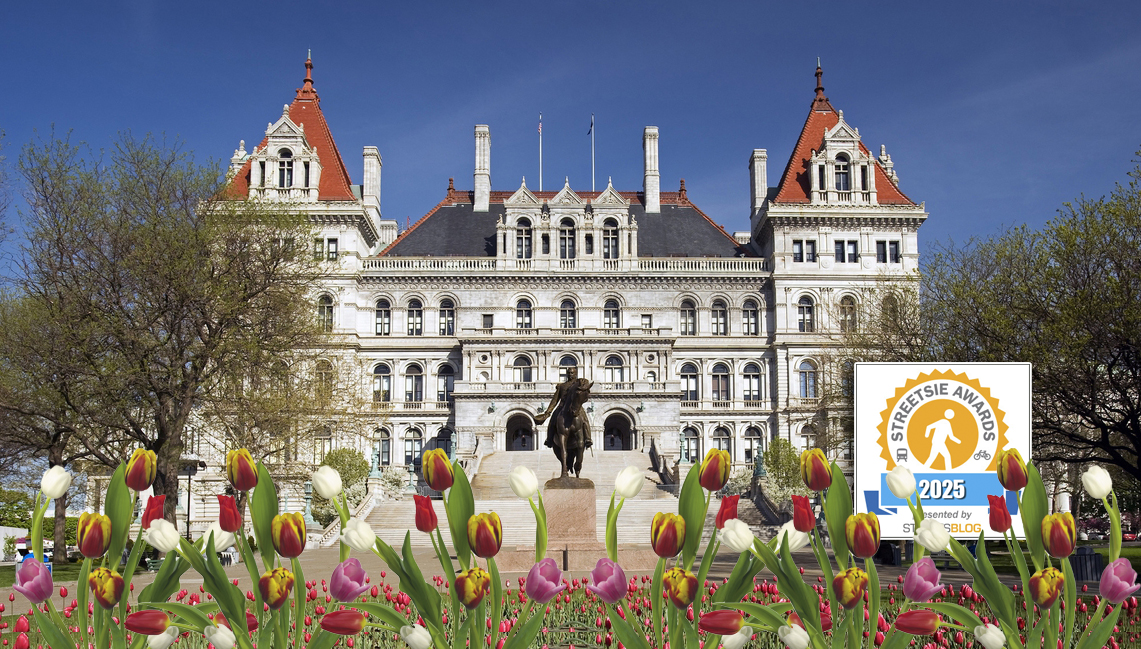Car-free households broken down by Assembly district. Red areas indicate where car ownership has gone up, blue areas where it has decreased. Click on each district for more information.
Fewer New Yorkers are driving to work than they did a decade ago, according to Census data Streetsblog reported on last December. But that same data shows that the citywide car ownership rate increased by 1.7 percentage points over the same period.
Among all NYC households, 46 percent own cars, according to Census data gathered between 2005 and 2009, compared to 44.3 percent in 2000. Factoring in Census data on the number of cars each household owns, that adds up to about 120,000 more cars in New York City.
We put together a spreadsheet (which you can download here) comparing new Census data on car ownership to information from the 2000 Census. (The main dataset in the spreadsheet is the percentage of car-free households in each legislative district, so negative changes are actually increases in the car ownership rate.)
The growth in car ownership was spread across the state, with increases in 126 out of 150 Assembly districts. Altogether, the statewide car ownership rate rose by about 1.4 percentage points, slightly less than in New York City.
The Bronx saw the most notable upticks in car ownership. Four of the five Assembly districts with the largest increases in car ownership rates were in that borough: AD 85 (Marcus Crespo, Soundview), AD 86 (Nelson Castro, Fordham), AD 77 (Vanessa Gibson, Morris Heights), and AD 84 (Carmen Arroyo, Mott Haven). All of those districts started from a relatively low baseline of car ownership. In AD 85, which saw the biggest jump, for instance, car ownership rose from 29.1 percent to 35.8 percent.
Of the few districts that saw their car ownership rate fall, the top five were AD 49 (Peter Abbate, Bensonhurst), AD 22 (Grace Meng, Flushing), AD 95 (Ellen Jaffee, Rockland County), AD 66 (Deborah Glick, Greenwich Village), and AD 67 (Linda Rosenthal, Upper West Side). The biggest change happened in AD 49, where the car ownership rate fell by 2.4 percentage points.
Interestingly, the only two New York City districts where our previous analysis found that the percentage of people driving to work increased since 2000, Glick's and Richard Gottfried's, both saw their car ownership rates go down.
It's notable that the share of New Yorkers who own cars rose while the share of those who commuted by car fell. Given that higher car ownership should lead to more driving, all things being equal, this suggests that factors like traffic congestion or high gas prices made driving to work less attractive even for people who own cars.
Transportation analyst Charles Komanoff pointed to the fact that car ownership only increased in owner-occupied housing units, not rentals, and that more households owned their own homes in the recent Census. He hypothesized that something connected to the increase in home ownership, such as a larger affluent population, was propelling the increase in car ownership.
The higher car ownership rate also has important implications for parking policy. With the city's population on the rise and the share who own cars also increasing, there are many more cars in need of storage than a decade ago. The increasingly desperate attempts to squeeze more on-street parking spaces out of the city's fixed supply of curb space may make more sense in the light of those numbers, for example. The increased car ownership rate could also reflect the Bloomberg administration's policy of enabling large amounts of off-street parking to be built throughout the city (though the Department of City Planning would probably cite rising car ownership to justify that same policy).
Map compiled by Frank Hebbert/OpenPlans.





